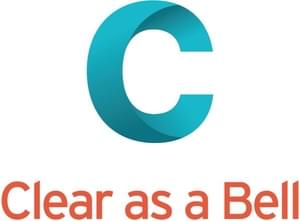In part 1 of influencing decisions I talked about how to design in the right kind of influence to the piece of work by acting as a consultant from the outset. In part 2 I want to share with you how you can continue that consultancy piece with the research findings. So often decision-makers get sent a report or given a presentation and that's seen as the end of the research phase. Getting decision-makers to view you as an partner to advise and test out ideas is to add value to both the data and your role in-house.
Making the most of the data
So, you've agreed to do the research and have come up with some meaty stuff. You want your carefully designed research and hard-won data to have a real influence on decisions, right? Here are 4 ways to help the decision-makers make the most of your findings:
- Make sure findings are clear and simple to understand for whoever needs them - what is the story, or stories, the data are telling? What will be important to the person or people you're speaking to? Who needs just the headlines and who needs all the detail? The detail may be a matter of some pride that you've produced it, but probably won't be as important to your decision-making audience (sorry, but that is how it is!) so keep them engaged by giving them what they need, not all you know. Make sure you know who does need the detail so that they can make the most of it.
- Ask the hard questions when you present your findings - what does this mean for you? Does it change what you thought? How can you use this as part of your decision-making? Were you trying to fix the right problem?
- Rather than just address the problem they've asked you to look at, Engage them in scenario planning using the findings. Get your client to ask themselves "What if I were to do this?" and look at several options to work through and think through how the options address the problem they wanted to solve. Pros and cons, barriers and opportunities, cost v effect, what it does solve and what it doesn't.
- Start thinking about impact planning right away. Ask how and when you would know if any change implemented has worked or not and how you might measure progress towards the goal. Think about "closing the loop" by designing a reporting system that will generate the right data from the outset. What would you want to be monitoring and so what data would you need to be collecting?
Make your "data tread" firm but light
Of course the findings you present will be one part of how a decision is made, so don't expect that the findings will be implemented verbatim - however much you believe in them!
Businesses, whether for profit, non-profit or public sector, evolve constantly and decision-makers need to adapt to the changes. Your findings can help them think through options, bring in external or internal context, provide data on how the context is evolving and even where it might be heading (although be wary here of extrapolating too far..). Unpopular or even unpalatable findings are quite often the most useful, but your internal client often has to be brought gradually round to accepting them.
If you think the data are somehow being subverted - oh, how often that can happen! then find a light way of going back to the data with your client and verifying that the whole set has been considered and interpretations fit with the actual findings, not wishful or selective thinking.
Be true to your research values
You, as an Insight consultant, can be a valuable contributor because your impartiality on the decisions needing to be made and your objectivity around the data will probably be unique for that decision-maker amongst the people they consult. If you don't feel you can advise impartially because the decision affects you in some way, then be upfront with yourself about that - bring in someone else or just don't get involved in those discussions.
The value people give to your role will increase with the trust you can build up with your research commissioners and decision-makers.
Atricle originally published in 2017 on LinkedIn
